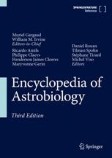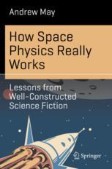Search
Search Results
-

-
Orbital Period Changes of the Eclipsing Binaries RW Cap, BG Peg, and CU Peg
AbstractThe changes in the orbital periods of the Algol-type eclipsing binaries RW Cap, BG Peg, and CU Peg have been studied. The changes in the...

-
Orbital Period Variations of the Eclipsing Binaries RX Ari and V449 Oph
AbstractThe variations in the orbital period of the eclipsing binaries RX Ari and V449 Oph have been analyzed. It has been shown that the variations...

-
Variations of the Orbital Period of an Eclipsing Binary W Del
AbstractWe have performed an analysis of the variations of the orbital period of the eclipsing binary system W Del. It is shown that its period...

-
Light-Time Effect in the Orbital Period Variations of the Eclipsing Binaries TT Del, EU Hya, and SV Tau
Abstract—Variations of the orbital period of the eclipsing binaries TT Del, EU Hya, and SV Tau have been studied. It has been shown that they can be...

-
Study of orbital relocation of objects in GEO via orbital perturbations and solar sail
This study considers the use of solar sails as devices on board space vehicles to promote their orbital relocation after the end of the useful life...

-
The Mass and Orbital-Period Distributions of Exoplanets Accounting for the Observational Selection of the Method for Measuring Radial Velocities. A Dominant (Averaged) Structure of Planetary Systems
AbstractStatistical distributions of exoplanets obtained by both ground-based and satellite telescopes are heavily distorted by observational...

-
Orbital Dynamics
The concept of an orbit is fundamental to the way that any object, whether artificial or natural, moves through space. Everyone knows that a...
-
On the orbital inclination evolution of the current large NEOs
This work aims to discuss the temporal evolution of the current large NEOs’ orbital inclination. We applied a numerical integration method to solve...

-
Spatial Orbital Gyrocompass. Questions of Theory and Application
AbstractThe developed spatial (3D) orbital gyrocompass allows performing all the necessary functions of angular orientation of a spacecraft relative...

-
Orbital angular momentum lasers
Light can be tailored to carry angular momentum well beyond the restriction of its two spin states, left- and right-circularly polarized light, by...

-
Orbital Operators
With the ISS planned to de-orbit in 2030, there are several commercial efforts to continue a space station presence in low Earth orbit (LEO). One...
-
The interplay of field-tunable strongly correlated states in a multi-orbital moiré system
The interplay of charge, spin, lattice and orbital degrees of freedom leads to a variety of emergent phenomena in strongly correlated systems. In...

-

-
Orbital dynamics of smart dust with Poynting–Robertson and solar wind drag
Smart dust devices are tiny systems-on-a-chip platforms capable of sensing, storing and transmitting data wirelessly as part of a large network with...

-
Change in the Orbital Period of a Binary System Due to an Outburst in a Windy Accretion Disk
AbstractWe consider a new mechanism for the removal of angular momentum from an X-ray binary system and the change in its orbital period—the mass...

-
Focusing Diffraction Optics for Orbital Telescopes
AbstractThe review is devoted to the principles, state of the art and problems of diffractive optics used to focus X-ray and γ-radiation in...

-
Universal lower bound on orbital periods
It is proved, using the curved line element of a spherically symmetric charged object in general relativity and the Schwinger discharge mechanism of...
-
Validation of TROPOMI Orbital Observations of the CO Total Column by Ground-Based Measurements at the OIAP Stations in Moscow and Zvenigorod
Abstract —Carbon monoxide (CO) total column (TC) measurements of the TROPOMI high-resolution orbital spectrometer have been validated by ground-based...

-
Secular evolution of co-orbital motion of two exoplanets: semi-analytical investigation
We consider a system consisting of a star and two planets in co-orbital motion. The masses of the planets are much smaller than the mass of the star....

